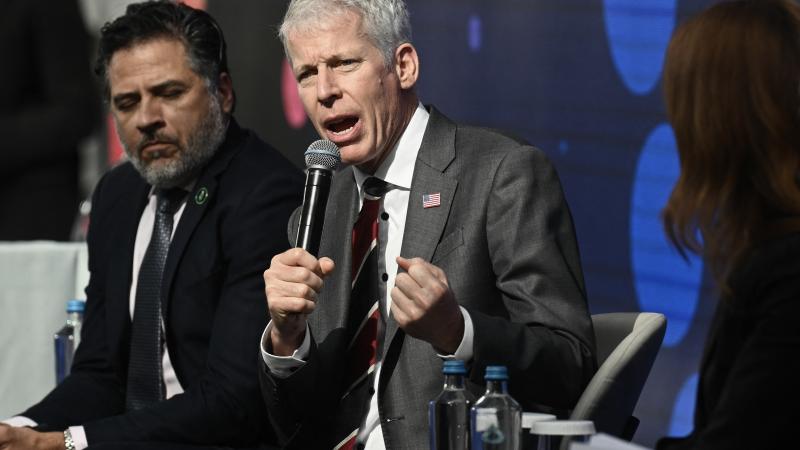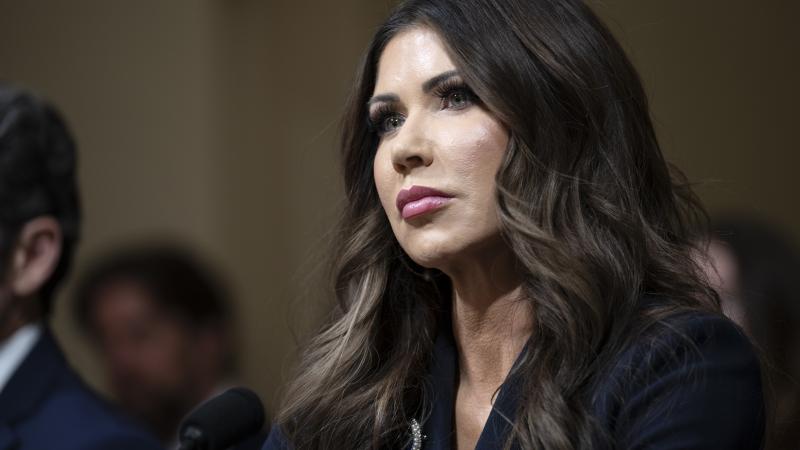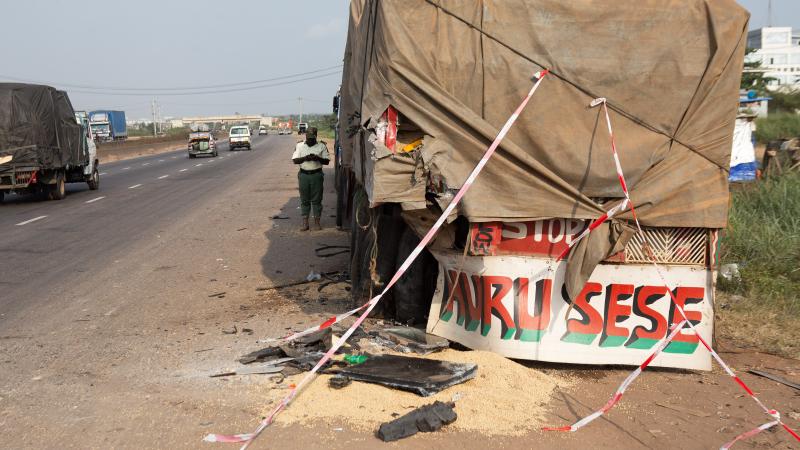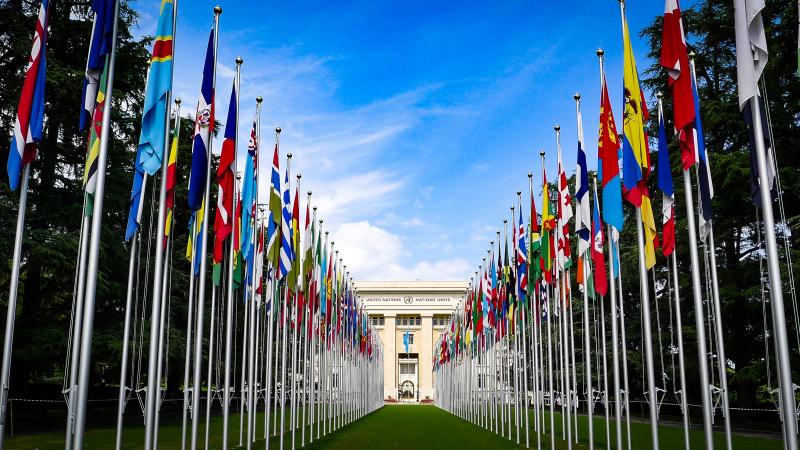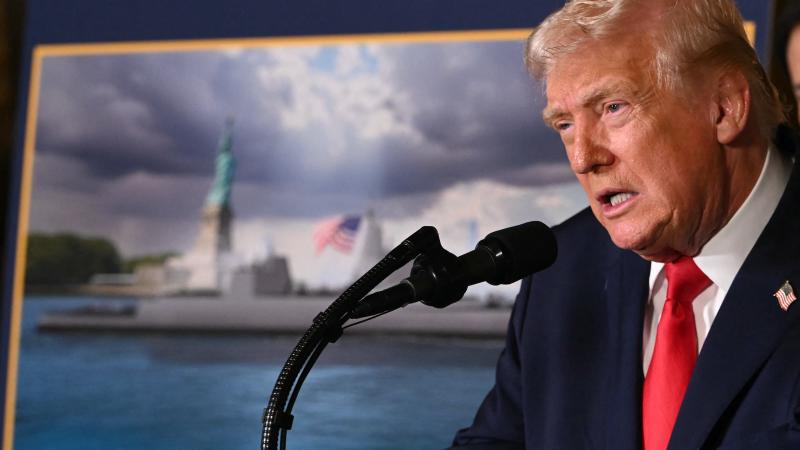Americans rejected Biden’s expensive climate agenda, but New York still offers it a safe haven
New York's "Climate Act" requires up to 40 gigawatts of dispatchable, emissions-free, energy generators. No one is entirely sure that will look like. Without them, the state could face blackouts lasting a month.
The Biden-Harris administration went full throttle on the climate agenda, including Biden’s signature Inflation Reduction Act, which could cost as much as $3 trillion over the next 35 years for all its taxpayer support for green energy. During President Joe Biden’s time in office, the media, some of it funded by anti-fossil fuel advocates, provided lots of friendly coverage for these climate ambitions.
Despite the political and media campaign, U.S. voters solidly voted for Donald Trump, a president who, among other things, calls climate change a hoax, says he’ll seek a “no windmills” policy, and promises a “drill, baby, drill” approach to oil and gas regulations.
As if to signal that New York will not be joining in this rejection of the Biden-Harris climate agenda, Gov. Kathy Hochul on Dec. 26 signed into law a bill that will charge oil and gas companies $75 billion over the next 25 years.
Critics, such as New York Sen. George Borrello, point out that the law, referred to as the “Climate Superfund” law, effectively fines oil and gas companies for producing a legal product, has no realistic plan to collect from international corporations operating under international law, and won’t stand up to legal challenges.
“I think it’s ridiculous on a number of fronts,” Borrello told Just the News.
Dispatchable resources
The fines on petroleum companies are on top of the state’s Climate Leadership and Community Protection Act, also called the “Climate Act,” which mandates New York stop burning fossil fuels for electricity by 2040. To keep the state from plunging into darkness, the plan requires dispatchable emission-free resources (DEFR), which is pronounced DEE-fer. These are resources that, unlike intermittent wind and solar, can be relied upon to provide electricity most of the time, but without the greenhouse gas emissions of coal- and natural gas-fired power plants.
What are these resources? According to Roger Caiazza, an environmental analyst with over 40 years of experience and publisher of the “Pragmatic Environmentalist of New York,” no one knows exactly.
“Responsible New York agencies all agree that new DEFR technologies are needed to make a solar and wind-reliant electric energy system work reliably. No one knows what those technologies are,” Caiazza said.
Two potential options are green hydrogen, which is hydrogen produced with water and electricity from wind and solar, and small modular reactors (SMRs). So far, attempts to produce green hydrogen affordably, even with the tax credits it receives, are failing, and SMRs are in the permitting and development process, and won’t likely be commercially deployed until the 2030s.
While state authorities estimated that the New York grid would need 18 to 23 gigawatts of DEFRs, a Cornell study estimates the state will need 37 gigawatts to 40 gigawatts of these theoretical DEFRs. For comparison, the entire U.S. coal-fired generation capacity is currently 181 gigawatts.
Running constantly throughout one year, 40 gigawatts of a dispatchable resource could power approximately 390 million households. However, households use only about 21% of the total energy consumption in the U.S., and that figure includes heat, which can come from natural gas, propane, and heating oil. Businesses, industry and transportation are the larger consumers.
The Cornell estimate also assumes 77 gigawatts of wind and solar, 13.6 gigawatts of rooftop solar, and 20 gigawatts of 8-hour battery storage will be added to the grid by 2040, but in 2023, the state had just over 2.2 gigawatts of wind and solar.
Blackouts likely
The lead author of the study, Professor Lindsay Anderson, told Syracuse.com that her team’s simulation of what would happen without backup from these DEFRs showed blackouts lasting a month in some parts of the state. These would happen during the hottest and coldest parts of the years, and half of New York City could be in the dark.
Borrello said he believes Hochul knows the Climate Act is unworkable, but the state legislature where Democrats outnumber Republicans two to one, is committed to powering the state with wind and solar. They aren’t interested in hydrogen produced with natural gas, which can be cheaper than green hydrogen, and they want nothing to do with nuclear energy, Borrello said.
“They are literally one trick ponies. All they want to talk about is wind and solar, and everyone knows, except the Democrats in the state legislature, apparently, that that is not enough,” Borrello said.
Borrello said, since the state has been shutting down nuclear power, and coal- and natural gas-fired power plants, it’s had to import more power than ever from other states. Ironically, much of this comes from coal plants.
“My Democrat colleagues have been able to cover themselves by importing dirty power,” Borrello said.
He said that approach has allowed New York Democrats to “pretend their fighting climate change,” but by 2026, the state won’t be able to import enough power to meet its needs."
Caiazza said that nuclear power is the only viable DEFR option. Though there are financial challenges that need to be addressed with nuclear energy, that’s true of any emissions-free, reliable option. And nuclear energy would overwhelm intermittent resources.
“Here is the thing. If the only viable DEFR solution is nuclear, then the wind, solar, and energy storage approach they are advocating cannot be implemented without nuclear power. I estimate that 24 GW of nuclear can replace 178 GW of wind, water and battery storage. Developing nuclear eliminates the need for a huge DEFR backup resource and massive buildout of wind turbines and solar panels sprawling over the state’s lands and water,” Caiazza said.
Superfund tax
In May, Vermont passed a similar law charging oil companies for what the state’s legislature claims are the costs of climate change. Last month, Bloomberg reported, the American Petroleum Institute and the U.S. Chamber of Commerce filed a lawsuit in Vermont federal court challenging the law. New York Democrats are expecting the oil and gas industry to fight its law in court, and according to the Gothamist, they’re looking to amend it to better withstand legal challenges.
The day after Hochul signed the law, the Wall Street Journal editorial board pondered why a state that’s losing residents and businesses would pass a law that, if enforced, would drive up the cost of energy, making it even more expensive to live there. The board argues that New Yorkers are “taxed out,” and so the state is looking for other revenue streams to pay for its needs.
The funds collected under the law are set to pay for infrastructure upgrades to roads, bridges and subways, preventive health care programs, grid upgrades, and energy efficiency programs. The law claims that upgrades to New York City’s sewer system are needed to “deal with regularly-occurring large rain events,” estimated to cost around $100 billion.
“But climate change is merely an excuse to get others to pay for upgrading infrastructure that New York politicians have failed to maintain because they divert so much money to welfare payments and fat public-worker pay and benefits,” the Journal editorial board wrote.
Caiazza agrees the law is all about generating a revenue stream for the state, but these costs are ultimately going to pass down to consumers.
“In this case the administration will use the projected funds to claim that it won’t be that bad for consumers. They are dreaming if they think they can cover all the costs up, but they are trying,” he said.
Reality versus politics
While New York Democrats may be committed to staying the net zero course, no law can suspend the laws of physics. Caiazza said these realities are creeping into New York politics, but he’s not seen a lot of evidence of this himself. There’s been a delay in the release of the “cap and invest” regulations, which taxes greenhouse gas emissions to create another funding stream for the state’s climate goals. Caiazza said the hesitation may be that the Hochul administration is coming to terms that the Climate Act isn’t affordable.
“I know that there is a faction within the agencies that are telling the administration that there are serious technical reality issues, too. It is not clear if anyone is listening to them or even willing to admit that they have heard from them,” Caiazza said.
There is a political risk, he added, in admitting the state can’t reach its 2040 net-zero goals with wind, solar and batteries.
“It eviscerates the schedule in the law, would be embarrassing to many politicians and would send the climate advocates into a frenzy,” Caiazza said.
Borrello is hoping that the Trump administration will put pressures on the state to back away unobtainable goals.
“We're going to have new allies in Washington, including the president, and I hope that that's going to at least expose some of the folly of the entire Climate Act,” Borrello said.
He plans to continue to press the issue in the state legislature where he can. He’s on the Committee on Energy and Telecommunications, where he plans to cite all the analyses showing the state can’t meet its goals with wind, solar and batteries.
“We’ll just ask them, what are you going to do about this?” Borrello said, adding that the state contributes 0.4% of total global greenhouse gas emissions.
“So breaking our economy to try to go, in theory, to net zero, in the end, isn't going to have any impact on global climate change. But it will have a tremendously negative impact on our economy,” he said.
The Facts Inside Our Reporter's Notebook
Links
- $3 trillion over the next 35 years
- funded by anti-fossil fuel advocates
- lots of friendly coverage
- climate change a hoax
- no windmills
- signed into law
- Climate Leadership and Community Protection Act
- Pragmatic Environmentalist of New York
- green hydrogen
- are failing
- a Cornell study
- 181 gigawatts
- 2.2 gigawatts of wind and solar
- told Syracuse.com
- shutting down nuclear power
- estimate
- Bloomberg reported
- filed a lawsuit
- better withstand legal challenges
- Wall Street Journal editorial board pondered
- cap and invest



